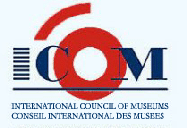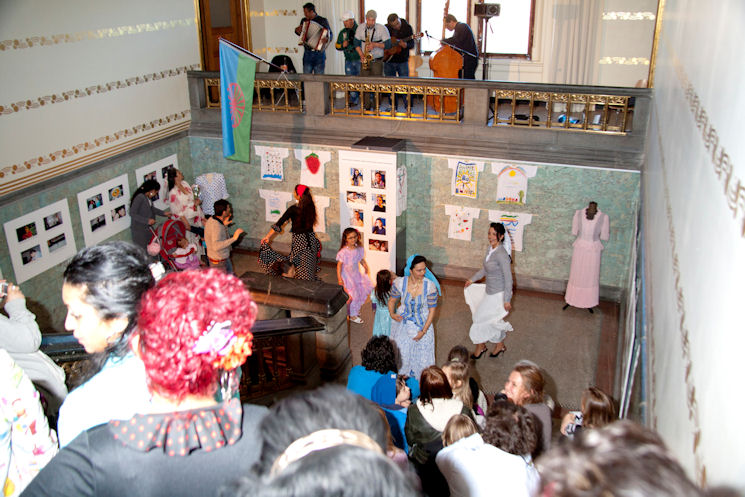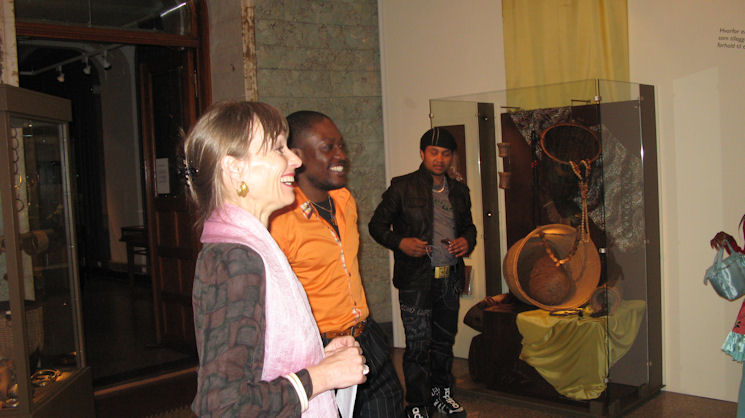 |
|
|||
|
Every Day is a Party – the Museum as Arena for Celebrations, or Celebrations as Tools for Dissolving Boundaries and Enhancing Intercultural Understanding. Presentation at ICME in Banz 2011 Participation is the key value to these activities and the celebrations and famlily days as valuable venues to break down boundaries between the museum and the communities – as well as invisble boundaries between individuals and groups. Here I will give a brief presentation of some of the celebrations that are annually organized on the museums activities programme. Oslo is the most cultural diverse/international city of Norway – more than 20 % of the citizens are immigrants or decendants of immigrants from the 70s until the present. Roughly around 100 000 people out of the 500 000 citizens. Apart from the archeological collections from Norwegian pre-history, KHM is housing the largest ethnographic collection in Norway, therefore, the dissemination of international culture is deeply rooted within the institution. Cooperation between the museum and the communities is an important quality to these venues in the museum, although many premises are there to begin with when the public is invited to cooperate on projects in the museum, such as opening hours, security, rules and regulations regarding food and drink, alcohol consumption. The international day of the Roma people Thursday April 8th. 2010 the international day of the Roma was celebrated, in a public setting, for the first time in Norway. In cooperation with the Roma associations a photo exhibition with contemporary documentary photos by Anne Stine Johnsbråten was mounted along with some historic photos from the city archives. |
 The international day of the Roma April 8th, Historisk museum Photo: Mårten Teigen, KHM |
| The museums director said the welcoming words, the leaders of the Norwegian and the
Swedish Roma association held speeches and state secretary to the minister of Labour and Social Inclusion spoke on behalf of the government. There were music, dance, food and soft
drinks and a short film was screened in the lecture hall. This event was later noticed by the authorities and on January the 18th the following year the minister of foreign affairs, Mr. Jonas Gahr Støre, referred to this in response to an interpellation regarding the Roma people in parliament: "We feel that trust between the Norwegian authorities and the Roma is strengthened, and that efforts made in recent years contribute to a positive development for the Norwegian rom. For example, marked Norwegian Rom on the 8th of April last year, for the first time the international Rom day through an open event at the Museum of Cultural History.” The museum is presently supporting a project by a group of architects to construct an “embassy for the Roma”, an installation representing the Roma peoples claim to achieve a house of their own, a space to meet and develop and strengthen their sense of identity and community in Norway. By the way - the Rom, the Gypsies is the only group registered as a national minority of Norway whom still do not have a museum or a cultural center of their own. KHM is also engaged in a long term documentation and exhibition-project with the Oslo Museum. The celebrations are open events – everyone is welcome to participate. But, this information didn’t reach out to the beggars from Rumania that are present all around the city centre. At the party on the evening some beggars were invited in to join the celebrations – but they were not prepared for a party and therefore did not feel like joining in. A challenge for celebrations in the future is to reach out and include a broader group of people. The Japanese Hanami day in spring and internal discussions in the museum. The initiative behind the Hanami day is a very resourceful Japanese lady and all her helpers in the Japanese community in Oslo. This year the tsunami and earth quake catastrophe struck Japan a few weeks before the planned Hanami day celebration. Of course this had a huge impact on the community – but they went ahead and put the Hanami day together. A request from the organizer to read some excerpts from the Bible arose the questions – if this was a direct high religious act that did not belong in the museum? It is a key discussion that needs to be kept alive. On the Hanami day 2011 there were no bible citations taking place – but I am unsure if this was the correct decision given the circumstance – was it may be a violation of the freedom of speech? Contact Zone The democratic republic of Congo's national day is the 30th June. |
||||
 Jules Bahati, President of the APP and Professor Kjersti Larsen enjoying the exhibition of Jewellery from the East Africa collection: “Adornment Outside and in”. Photo: Tone C.S. Karlgård |
| This year it was the fifth time the museum was the arena for the celebration. In
postcolonial times it is important that the museum opens up to and allows itself to be a place where new processes may take place – in a sense functions as a contact zone -
to use the concept James Clifford established in this famous publication: Routes, 1997) a place where the diaspora population meet “ their own” objects. From the
museums perspective the fact that the Congolese contribute with their knowledge and experiences around these objects, are valuable qualities. Similar to what took place around the Hanami day - the museums staff have to dare to face some difficult topics for discussion raising around the events. These may be experimental happenings that initiates unforeseen consequences and developments. It is interesting and rewarding to engage in establishing and strengthen the museum's role as a dialogue forum and to reach new audiences. The aim is to achieve a stage where interested parties develop a sense of ownership to the museum as the social institution that it is. The museum is both a place of openness and joy and quiet contemplation. Such events can be seen as exercises in letting go of control and remind museums professionals that we are working for something greater than ourselves and that if we say the museum is for everyone, so we must dare to somehow give up control. But most importantly it is inspiring to work to be a participatory museum - a place where the public feel they can contribute something and share cultural experiences. |
||||
| ▲ til toppen Tilbake til reiserapporter 2011 |